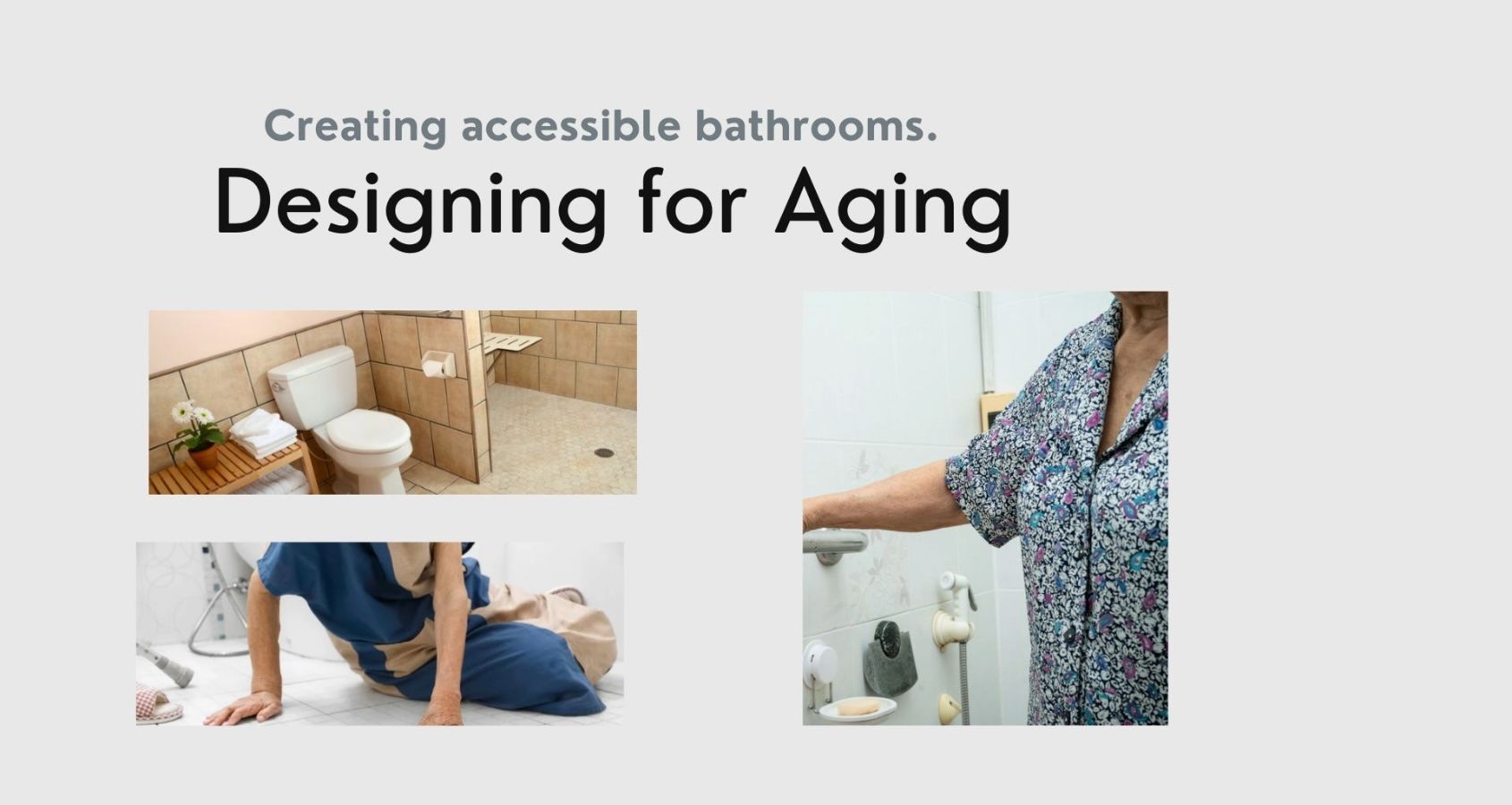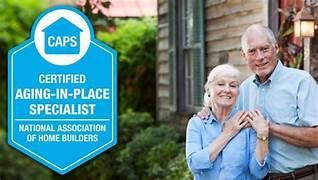Blog
Aging in place: Bathroom design for accessibility
Safety Features in Accessible Bathrooms

As we age, the desire to stay in the comfort of our own homes becomes stronger. According to AARP, nearly 90% of seniors prefer to stay in their homes as they age. Aging in place is a growing trend among seniors who wish to maintain their independence and live in familiar surroundings. However, the traditional design of many homes can pose challenges to mobility and safety.
To support this choice, it's crucial to make modifications that enhance accessibility and safety, especially in the bathroom, where many accidents occur.
At Kitchens By Design, we specialize in creating accessible bathroom designs that prioritize safety and ease of use. With a Certified Aging in Place Specialist (CAPS) and a certified Living in Place Professional on our team, we ensure that your bathroom is both functional and stylish.
Key Principles of Accessible Bathroom Design
When designing a bathroom for aging in place, we focus on three main principles: safety, easy mobility, and comfort. Each of these elements plays a crucial role in ensuring that the bathroom is a secure and user-friendly space for seniors.
Safety Concerns
- Slippery floors: Wet floors can be hazardous and increase the risk of falls for seniors.
- Lack of support: Traditional bathrooms often lack grab bars and handrails near the toilet, shower, and bathtub, making it difficult for seniors to maintain balance and stability.
- High thresholds: Stepping over high edges to enter showers or bathtubs can be challenging and increase the risk of tripping and falling.
- Poor lighting: Inadequate lighting can make it difficult for seniors to see potential hazards, increasing the likelihood of accidents.
Mobility Limitations
- Narrow doorways and hallways: Narrow spaces can be challenging to navigate, especially for those using walkers or wheelchairs.
- Raised shower/tub edges: Raised edges can be difficult or impossible to step over for seniors with limited mobility.
- Fixed shower heads and lack of seating: Traditional showers often lack adjustable shower heads and built-in seating, making it challenging for seniors to shower while seated.
- Standard toilet height: Traditional toilets may be too low, making it difficult for seniors to sit down and stand up without straining.
Lack of Comfort and Convenience
- Traditional faucets and handles: Knobs and handles can be difficult to operate for those with arthritis or limited hand strength.
- Inaccessible storage: Cabinets and shelves at standard heights may be out of reach for seniors, making it challenging to access essentials.
Lack of ergonomic design: Traditional bathrooms often lack features like comfort-height toilets, vanities with knee space, and shower benches, which can make daily tasks more challenging for seniors.
Recommended Safety Features in Accessible Bathrooms
- Non-slip Flooring: Wet floors can be hazardous. Non-slip tiles or vinyl flooring can significantly reduce the risk of falls.
- Grab Bars and Handrails: Installing grab bars near the toilet, shower, and bathtub provides support and stability, preventing falls and offering peace of mind.
- Walk-in Tubs and Showers: These features eliminate the need to step over high edges, making it easier and safer to enter and exit. Adding a built-in seat can further enhance safety.
- Adequate Lighting: Proper lighting is essential to prevent accidents. Consider adding night lights, motion-sensor lights, and task lighting to illuminate key areas.
Recommended Mobility Enhancements Features for Seniors
- Wide Doorways and Hallways: Widening doorways and hallways allows for easier navigation, especially for those using walkers or wheelchairs.
- Zero-threshold Showers: These showers eliminate the barrier of a raised edge, making them wheelchair accessible and reducing tripping hazards.
- Adjustable Shower Heads and Seats: Handheld shower heads and built-in seats offer flexibility and comfort, allowing seniors to shower while seated.
- Raised Toilet Seats: Elevating the toilet seat can make it easier for seniors to sit down and stand up without straining.
Recommended Comfort and Convenience Features
- Lever-style Faucets and Handles: These are easier to operate than traditional knobs, especially for those with arthritis or limited hand strength.
- Easily Reachable Storage: Installing cabinets and shelves at accessible heights ensures that essentials are within easy reach.
- Ergonomic Design Elements: Consider features like a comfort-height toilet, a vanity with knee space for seated use, and a shower bench.
At KBD, we pride ourselves on our expertise in designing bathrooms that cater to the needs of seniors. We've helped many seniors adapt their homes to support their changing needs, ensuring they can live independently and safely.
Conclusion
Creating an accessible bathroom is a vital step in supporting aging in place. By incorporating safety features, enhancing mobility, and ensuring comfort, you can make your bathroom a safe haven for years to come. Contact us today for a consultation with our certified designer and let us help you create a bathroom that meets your needs and exceeds your expectations.
Ready to transform your bathroom for aging in place? Reach out to us at Kitchens By Design today! Call (800) 614-1664 or visit our website at www.kbyd.com to schedule your consultation.



